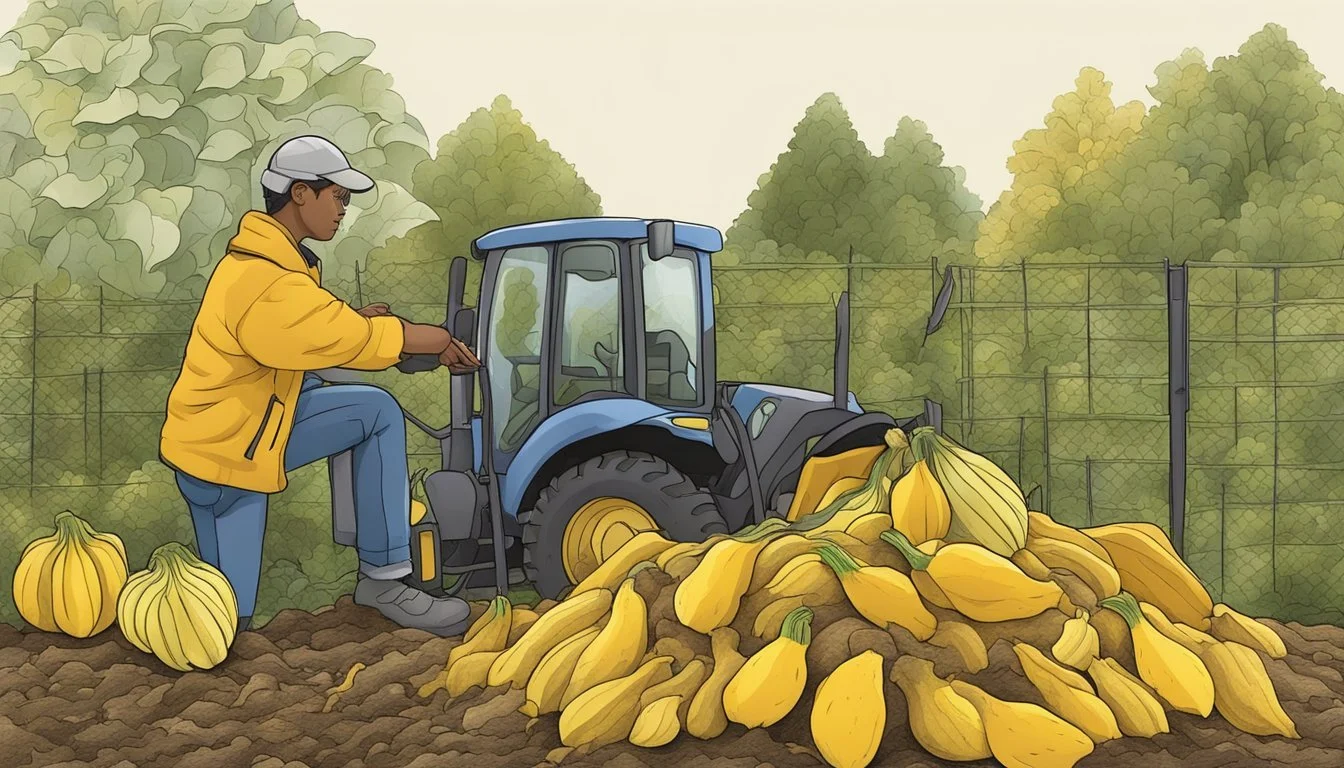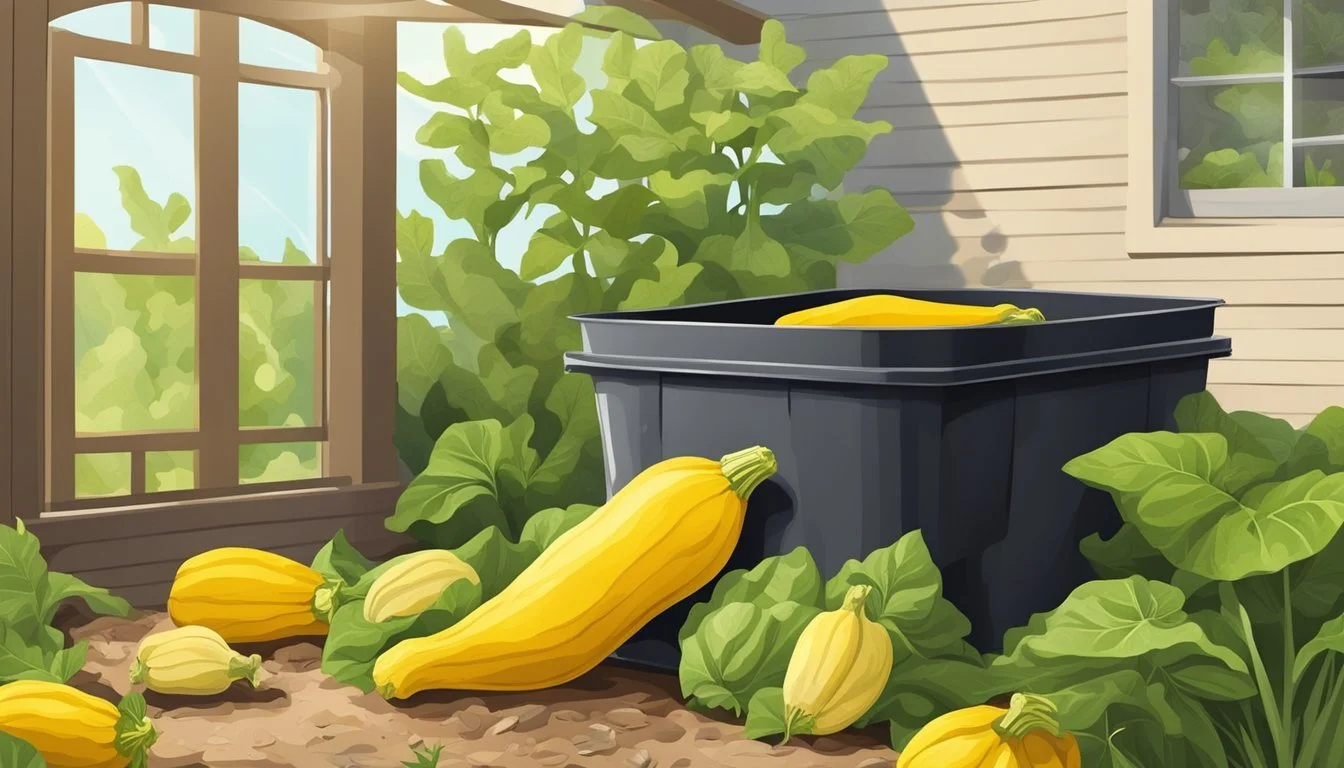Can You Compost Yellow Squash Skins?
Unveiling the Facts
Composting is a natural process that converts organic matter into nutrient-rich soil, and it's an effective way to reduce household waste. When it comes to squash, particularly yellow squash, gardeners often wonder if the skins can be included in their compost piles. The skins of yellow squash are organic and, like other vegetable matter, can decompose over time. This means that they can be successfully added to compost, providing valuable nutrients to the resulting soil amendment.
The skins of yellow squash are beneficial to compost because they add bulk and variety to the composting material, which is necessary for a well-balanced compost pile. As they break down, they contribute to the nitrogen content, which is an essential component for the microorganisms that facilitate the composting process. To ensure efficient decomposition, it's important to chop or shred the squash skins, as smaller pieces offer more surface area for microbes to work on, thus speeding up the composting process.
While the skins of yellow squash are compostable, it's crucial to consider the overall balance of the compost pile. A diverse mixture of greens, which are nitrogen-rich materials like vegetable scraps, and browns, which are carbon-rich materials like dried leaves or paper, is needed for optimal composting. Including yellow squash skins as part of the green component helps maintain this balance, leading to a successful transformation into fertile compost that can enhance the health and productivity of garden soil.
Composting Basics
In the practice of composting, one utilizes organic waste materials to produce nutrient-rich soil amendments beneficial for gardening. This section focuses on the specifics of composting yellow squash skins and the composition of compost.
Benefits of Composting Squash Skins
Composting yellow squash skins is advantageous, as they are a source of nutrients such as nitrogen and potassium, which are essential for plant growth. When squash skins are added to the compost, they decompose and enrich the resulting compost with these valuable nutrients. This contributes positively not only to the garden where the compost is used but also to the environment by diverting organic matter from landfills.
Nutrient Contribution: High levels of nitrogen and potassium.
Waste Reduction: Diverts organic waste from landfills.
Understanding Compost Composition
Compost is the end product of the decomposition process where organic matter is broken down into simpler organic and inorganic compounds. The process is facilitated by microorganisms and requires a balance of carbon-rich materials ("browns") and nitrogen-rich materials ("greens"). Proper compost composition ensures efficient decomposition, reduction in odor, and the creation of a biologically-stable soil amendment.
Greens:
Provide nitrogen.
Examples include fruit and vegetable scraps, coffee grounds, and grass clippings.
Browns:
Provide carbon.
Examples include leaves, straw, and cardboard.
For successful composting, one should maintain a balance between these components to support the microbial activity essential for effective organic matter breakdown.
Preparation of Squash for Composting
Composting yellow squash skins is an excellent way to reduce kitchen waste and enrich garden soil. Proper preparation is key for efficient breakdown and nutrient release.
Separating Edible Parts from Composable Material
One must first discern which parts of the squash are suitable for the compost bin and which are not. Typically, the flesh of the squash is highly compostable. However, with yellow squash, when the skin becomes tough, it's a sign that the seeds have matured, making them less ideal for composting as they can resist decomposition and potentially sprout. Therefore, it’s advisable to:
Remove and discard the mature seeds.
Separate the softer flesh from the tougher skin if preferred, though both are compostable.
Chopping for Faster Decomposition
To accelerate the composting process, the squash skin should be cut into smaller pieces. Smaller pieces provide more surface area for microorganisms to work, leading to faster breakdown into soil. Though the flesh will decompose quickly due to its moisture and nitrogen content, the rind will take longer. To prepare squash skins for composting, follow these steps:
Halve or quarter the squash for easier handling.
Use a spoon to scoop out and discard any mature seeds.
Chop the tough skin into small, even pieces, roughly 1-2 inches in size.
By following these methods, one ensures that the squash skin, along with the flesh, becomes beneficial compost material that will contribute to the nutrient cycle of a garden.
Composting Process and Techniques
In composting yellow squash skins, the effectiveness of the process hinges on the balance of materials and maintaining optimal conditions for decomposition.
Layering Green and Brown Materials
To achieve a successful compost pile, one needs to balance green and brown materials. Green materials, such as yellow squash skins, are rich in nitrogen, a crucial element for composting. They should be layered with brown materials, like dry leaves or straw, which provide necessary carbon. An effective ratio is generally considered to be about 2-3 parts brown to 1 part green by volume.
Green Materials (Nitrogen-rich) examples:
Vegetable scraps
Grass clippings
Brown Materials (Carbon-rich) examples:
Dry leaves
Twigs
Cardboard
Maintaining Proper Compost Conditions
The compost pile should be kept at the correct temperature—ideally between 135 and 160 degrees Fahrenheit—to encourage the activity of microorganisms responsible for decomposition. Regularly turning the compost can help to maintain this temperature range. Adequate moisture is also crucial; the material should feel like a wrung-out sponge. Air circulation is essential to keep the process aerobic, which prevents foul odors and accelerates decomposition.
Common Issues and Solutions
In composting yellow squash skins, one must address potential issues such as pests and diseases which can be mitigated through specific preventive measures and compost management techniques.
Pest Prevention in Compost
Pests, particularly squash vine borers, are a concern when composting squash skins. These pests are attracted to squash plants and could potentially lay eggs in the compost pile. To prevent this:
Maintain a balanced compost ratio: Ensure that the compost pile has a good mix of green (nitrogen-rich organic material such as squash skins) and brown (carbon-rich material like dried leaves) components.
Regularly turn the compost: This helps in disrupting the life cycle of pests by exposing them to a changing environment and predatory insects.
Disease Control and Compost Management
Disease can spread through compost if infected plant material is introduced. The following strategies help in mitigating this risk:
Inspect squash skins before composting: Look for signs of disease or rot and do not include them if detected.
Thorough composting process: Ensure that the compost pile reaches adequate temperatures (between 140ºF and 160ºF) to kill any disease organisms present in the organic material.
By diligently observing these methods, the issues of pests and diseases in composting yellow squash skins can be effectively managed.
Utilization of Composted Squash Skins
Composted yellow squash skins can be a valuable addition to garden management practices, particularly by enriching the soil and subsequently supporting plant growth.
As Fertilizer for Vegetable Gardens
Yellow squash skins composted properly turn into a rich fertilizer that provides essential nutrients to vegetable gardens. When these skins break down, they add a balance of nitrogen and other minerals beneficial for vegetables seeking to thrive.
Nitrogen: Crucial for leafy growth
Phosphorus: Supports root development
Potassium: Aids in overall plant health
Adding this compost around the base of the plants can supply a steady stream of nutrients as it slowly releases into the soil, encouraging vigorous vegetable growth.
Contribution to Soil Health and Plant Growth
Composted squash skins also contribute to the wider soil health, fostering an environment conducive to robust plant growth. The organic matter in the skins improves soil structure, which:
Enhances water retention
Aids in aeration, essential for roots
Supports soil organisms that play a role in breaking down organic matter
This improved soil environment allows plants to access nutrients more effectively, leading to healthier vegetables and plants with increased resilience against pests and diseases.







